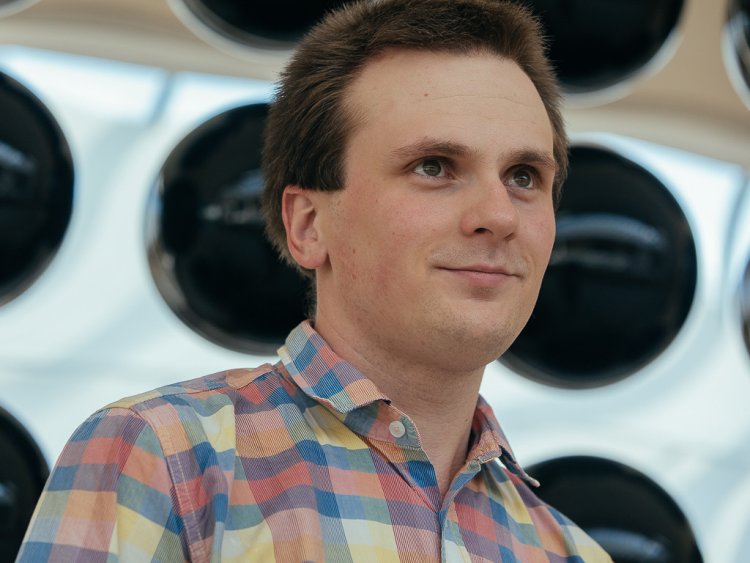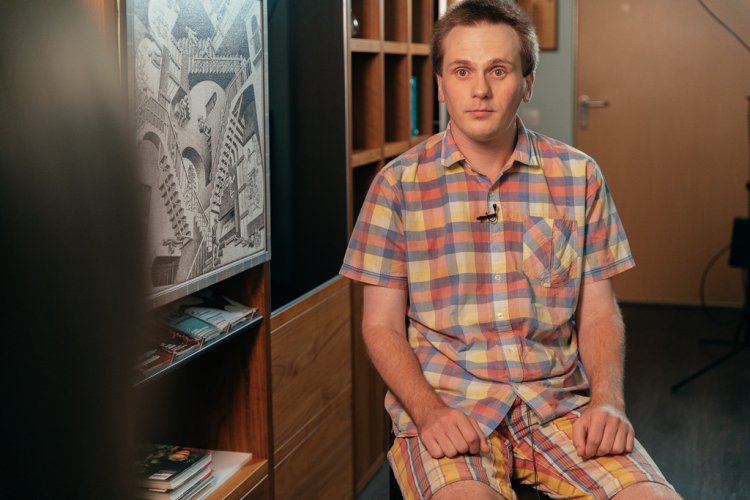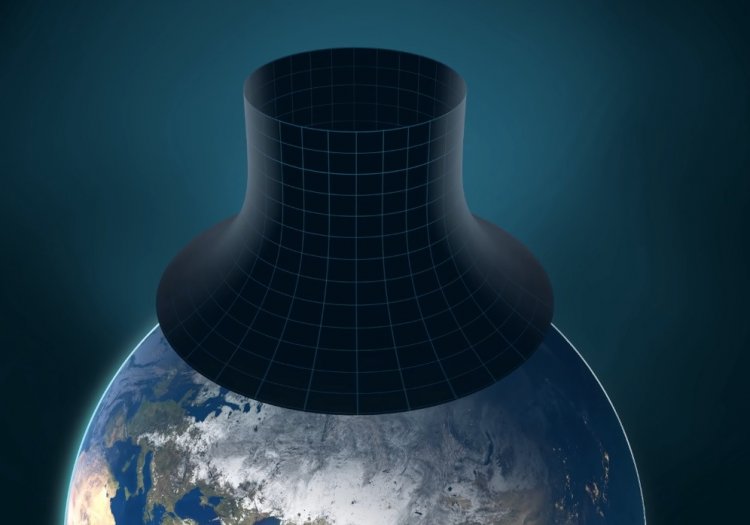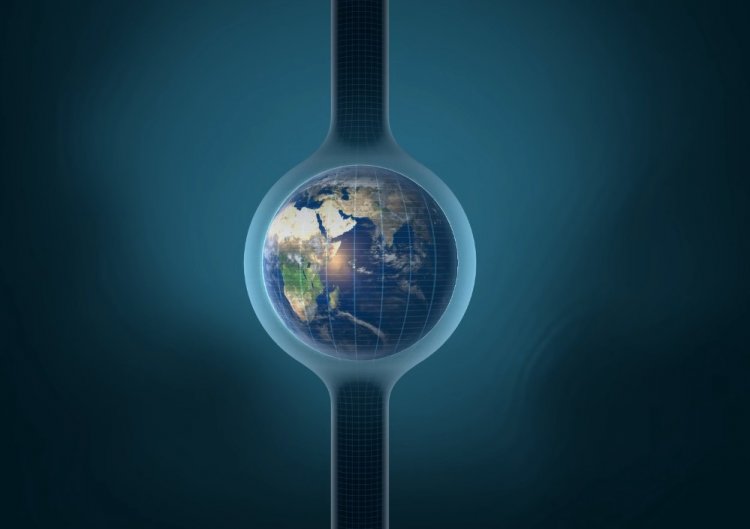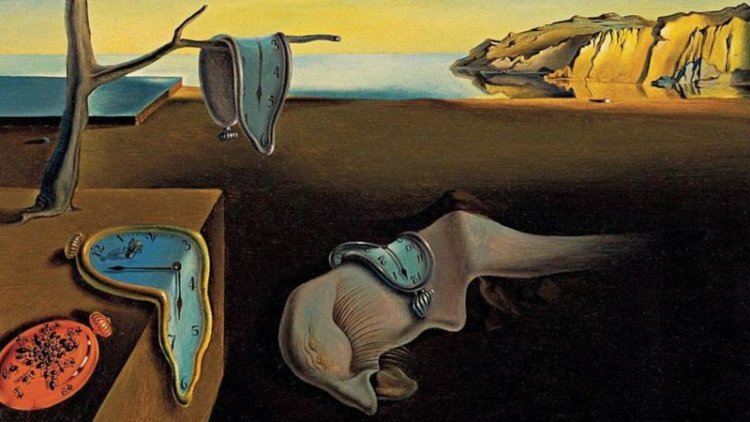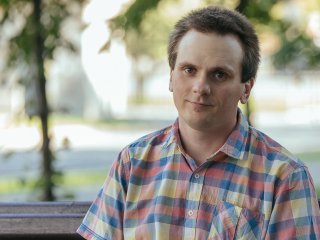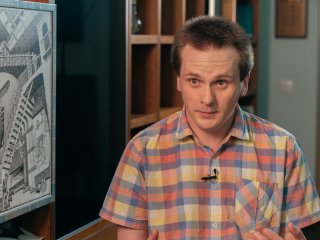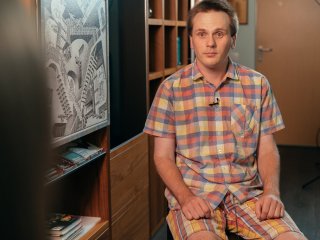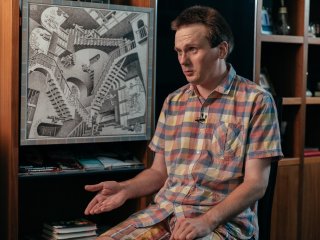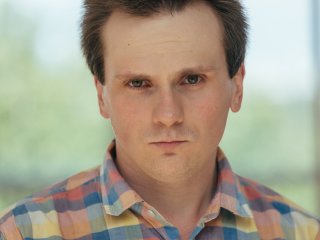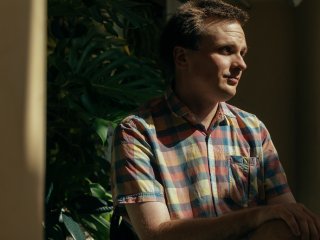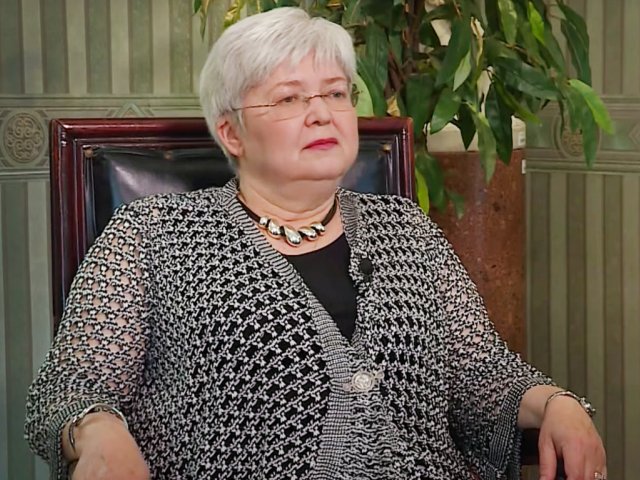What is time: an illusion or physical reality? Does time exist if no one is looking at it? Are time and space absolute and can time go backward? People have been searching for answers to these questions for centuries. We also decided not to stay away and discussed the nature of time with Anton Andreevich Sheykin – Candidate of Physical and Mathematical Sciences, Assistant Professor of the Department of High Energy and Elementary Particle Physics of Saint Petersburg State University.
─ A concept such as time appears in any science. How does physics explain time?
─ This is, perhaps, one of the hardest questions that can be asked in physics at all. We are good at measuring time, but we still have a rather poor understanding of what exactly we are measuring.
In the International System of Units (SI), all standard units today are already tied to the values of fundamental constants, that is, their values are determined accurately and do not need to be experimented with. And only the unit of time, the second, is still determined from experience.
The answer to the question of what time is will greatly depend on the epoch. In the 20th century, for example, this question was turned upside down many times.
If we remember where the idea of time came from, we can say that initially, a person generally perceives time purely psychologically. This, by the way, was also reported by Einstein when he explained his theory of relativity on a household example: he said that an hour spent in a good company would seem shorter than five minutes spent on a hot stove. But psychological time, of course, is no good for physics, because it is heterogeneous and can go faster and slower. Therefore, we need some more stable sources of feeling the flow of some processes.
People quickly learned to measure time, coordinating it with astronomical cycles: the daily cycle, the lunar cycle, the annual cycle. And for a long time, it was astronomy that provided humanity with the most reliable source of understanding of where are we moving to. People saw recurring, periodic phenomena around them and learned to compare their own feelings of current processes with natural cycles.
Perhaps the most popular answer to the question of what is time would be as follows: time is what we measure by a clock. And what is a clock? The clock is a kind of physical system in which periodic processes occur: that is, in order to determine the time, we need some kind of cyclical process. In ancient times, these cyclical processes were perceived as something so real that the ancient Greeks even believed that time forms a closed ring and goes in circles.
Together with his colleagues from Saint Petersburg State University, Anton Sheykin is engaged in one of the modified theories of gravity – the so-called Regge-Teitelboim approach or embedding theory, which, among other things, was built to solve the problem of time in the theory of gravity. Photo: Nikolay Mokhnachev / Scientific Russia
─ In modern science, is it believed that there is no such thing as absolute time?
─ Absolutely correct. In his memoirs, Einstein wrote that by the beginning of the 20th century in Europe, everyone knew what absolute time was, except him.
300 years ago, Newton said that time is an axis that counts some parameter at each point of our space; time in his concept is a certain quantity that can be determined in the entire universe at once, and therefore we can say that there is an absolute time that we can determine without reference to any arbitrary agreements.
Newtonian time is a kind of universal time that is absolutely objective and does not depend on human perceptions, a kind of perfect time. But, as we know, nothing perfect exists in nature, and Newtonian time is something like a spherical cow in a vacuum. And so, Einstein in 1905 did what it was high time to do with Newtonian time: he showed that we can’t measure it.”
If you ask any physicist what this or that quantity is (for example, time), then we will immediately talk about how we measure this quantity. Albert Einstein showed that if we can exchange information only at a finite speed – for example, the speed of light – then it is impossible for two people to synchronize their clocks without any additional arrangements.
─ That is, it is unclear where the cause is, and where is the effect?
─ Yes, Einstein showed that under certain conditions, the causes and effects for different people can even change places.
When they talk about Einstein’s theory of relativity, they do not always specify the theory of relativity of what?
The relativity of location was first proclaimed by Copernicus. He said, why to consider Earth the center of the universe when it makes it hard to make calculations; instead, you can put the Sun or another area near it in the center. The relativity of motion was proclaimed by Galileo. He explained that you can move at a constant speed and not even notice it. Einstein, on the other hand, proclaimed the relativity of time, as a result of which the Newtonian concept of absolute simultaneity came to an end.
Einstein proposed a thought experiment that established the relativity of simultaneity. He demonstrated that two events that are simultaneous for one person can be separated by time if one of these people, for example, gets on a train or, conversely, stops if he was traveling before. Einstein proved that the flow of time in a physical system depends on the speed at which the observer moves relative to it.
─ It was Einstein who said that the only reason for time is so that everything doesn’t happen at once, right?
─ Yes, we can understand it that way. If we talk about the instrumental understanding of time, then why do physicists need the concept of time at all? Because it is a quantity that shows how a physical system evolves, that is, it is a parameter of evolution. And if everything happened at once, then, it turns out, there is no evolution.
A.A. Sheykin. Photo: Nikolay Mokhnachev / Scientific Russia
─ And the physical laws themselves, do they evolve over time? Or have the world constants remained unchanged since the Hot Big Bang to this day?
─ This is a very interesting question because we are still not completely sure that the world constants, such as the speed of light, Planck’s constant, or the gravitational constant, are unchanging in time. This is something to be established with the help of the most subtle experiments.
At the Petersburg Nuclear Physics Institute named by B. P. Konstantinov, calculations were made to find out the possible variation of fundamental constants in the past on the basis of an interesting observation of a natural nuclear reactor in Oklo. Our scientists tried to find out what was the rate of nuclear reactions that took place there 2 billion years ago and calculate possible changes in fundamental constants based on these data. As far as I understand, it was possible to get only a restriction from above: if the value of the constants has changed, then no more than by a certain amount. That is, we (at least, I) want to believe that, for example, the speed of light and Planck’s constant do not change over time, but this, in general, is a question that the experiment should solve.
─ We say that there is no absolute time. Does absolute space exist?
─ This is also a rather interesting question, and Einstein was looking for an answer to it under the impression of the works of Ernst Mach.
Einstein got his idea of the relativity of space from Mach. Mach believed that space is nothing more than an auxiliary quantity that helps us describe the relationships between objects. And if we ask ourselves what the properties of space are, we will find that we can answer it only by observing the movement of bodies in this space. Based on this, Mach concluded that space is something absolutely auxiliary, and true physics should be based on the description of systems of relations.
Ernst Mach put forward a rather vague philosophical principle (Einstein called it the Mach’s principle), according to which the inertia of bodies is determined by the presence of all other bodies in the universe, that is, it is not space that determines the property of inertia of bodies, but the presence of all other bodies in this space. Einstein, when creating the general theory of relativity, thought that he was implementing the idea of Mach. But then, when he constructed a mathematical formulation of the general theory of relativity, it turned out that it did not agree with the Mach principle. Nevertheless, the idea that space is also not absolute was a guiding star for Einstein.
─ It is known that time and gravity are connected. Does gravity cause time to slow down, or vice versa – the properties of time cause gravity?
─ I would say that probably the former, and here we again return to what happened to the concept of time in the 20th century. Newton believed that time is just a parameter of the evolution of a physical system, which has nothing to do with the properties of space and can be determined independently of them. Einstein’s general theory of relativity, and even Minkowski’s special theory of relativity, refuted this statement by giving time another meaning besides the physical one – a geometric meaning.
Minkowski writes, “Space for itself, and time for itself shall completely reduce to a mere shadow, and only some sort of union of the two shall preserve independence.” He meant that we live in a certain four-dimensional geometric space-time, that is, in a certain unified structure in which time has the same geometric interpretation as our coordinate axes X, Y, Z. But quite soon some difficulties arose here: it turned out that time as a geometric characteristic of the world we live in and physical time, generally speaking, are not completely identical. We can give such an example. There is a whole class of physical theories: for example, geometric optics, particle mechanics in special relativity, or gravity, in which there is no preferred choice of time. If, for example, you are dealing with the issue of the propagation of light rays within the framework of geometric optics, you can determine time as you wish; it is only important that the light beam at one point was earlier, and at another later. If you comply with this requirement, you can determine time as you wish. And it turns out that in such theories, physical time seems to disappear, and it is not very clear how to build a physical theory at all. But here geometric time comes to our aid. Let’s say we don't know how it is more convenient to consider the evolution of this physical system, but we have an understanding that this entire physical system is located in a certain geometrized world. Then we can simply consider one of the directions of this general geometric space as our evolution parameter.
Time warp near planet Earth.
Source: screenshot of Physics from Pobedinsky
Time warp near planet Earth, larger scale. Source: screenshot of Physics from Pobedinsky
─ Wasn’t it Einstein who had an idea that all physics can be reduced to geometry?
─ Yes, but it is not always possible. And here lie just one of the main difficulties that prevent the successful quantization of gravity. Actually, Einstein built a theory that completely geometrized gravity. He said that the gravitational interaction of bodies is nothing but movement in curved space-time and not the influence of a certain force. In fact, this is the influence of the geometry of space. But when it comes to building a quantum theory, scientists begin to need physical time. We need a certain parameter of evolution that would determine, roughly speaking, what happened before and what happened after.
─ And this parameter is introduced artificially?
─ In the general theory of relativity, as we have already said, there is no dedicated physical time: it must be somehow invented separately.
Yes, this parameter needs to be artificially introduced, because even more terrible things happen over time in the general theory of relativity than in the special one. So, in the special theory of relativity, time is determined taking into account the choice of a reference system, but quite simple linear transformations operate. If you know what time looks like in one frame of reference, you immediately write formulas in another frame of reference that moves at a constant speed relative to it, and the formulas are very simple. But in the general theory of relativity, the choice of time is much wider. Einstein said that in general, can be chosen as you like in the general theory of relativity. That is, you will choose the time in an arbitrary way, and you can build a physical theory. And this, on the one hand, is kind of good, but on the other hand, it’s terrible. Because the existence of time as a physical parameter that actually flows somewhere is associated with the existence of conserved quantities, for example, energy; after all, energy is a quantity that persists in a physical system if this system is resistant to time shifts.
If I conducted an experiment today and did the same thing tomorrow, and the results of the experiment coincide, this may mean that there is conserved energy in the physical system in which I worked, and this energy is the main tool for building a quantum theory of anything. That is, if I know how to record the energy of any physical system, I can try to quantize it. So, the arbitrariness of the choice of time in the theory of gravity leads to the fact that the energy there is very difficult to determine.
Paradoxically, the total energy of any physical system in which gravitational forces act is zero, with some reservations. And the main problem that prevents the construction of a quantum theory of gravity is that in general relativity it is impossible to determine what the energy of a gravitational system is equal to without additional assumptions. Thus, the arbitrariness of the choice of time leads to the fact that none of the times can be endowed with physical properties.
Many believe that one of the most famous paintings by Salvador Dali, The Persistence of Memory, was created under the influence of the works of Einstein. The artist himself claimed that he was inspired by the soft French Camembert cheese.
Photo: La persistencia de la mémoire / Salvador Dali
─ Can we say that time is a construct of the observer? If we remove all living beings from the universe, will there be time?
─ Now this is a question for Buddhists. If a tree fell in a forest, and no one heard its noise, did it fall or not?
─ And how does physics answer this question?
─ If we consider geometric time as one of the directions of our common space, Minkowski space, for example (if we neglect gravity), or Riemann space, then time, of course, exists, even if we remove all matter from the universe.
There is a very wide class of vacuum solutions to Einstein’s equations, where if I remove absolutely all matter from the universe and ask, “What will this universe look like, will there be a time in it?”, Einstein says that, of course, there will, because it is just a four-dimensional space-time that can be deduced on paper.
─ It turns out that even if you turn off gravity and remove all matter, there will still be time left?
─ If we remove absolutely all matter from the universe, then in principle it is possible to build a model of such a universe in which space will still be curved. Such a space can be described as a space through which gravitational waves run, starting from one edge of the universe, and ending at the other.
─ And what bends this space if there is no matter?
─ This is a very ambiguous question. The fact is that there is a solution to the Einstein equation for such situations. Does it have any physical meaning? It depends on who you ask. If we remove all matter from the universe and demand that there be no gravitational field at infinity from the observer, then space, in general, will be flat. But if you do not require boundary conditions at infinity; if you do not require that, at arbitrarily large distances, your space be static and no processes occur in it, then you can come up with some universes in which there will be no matter at all, but gravity will still be present. However, from the point of view of physics, this is, of course, difficult to interpret, because it is generally assumed that any gravitational wave is generated by some source. Although from the point of view of an abstract mathematician, this solution is no worse than the others. And from the side of physics, of course, gravity is generated by matter. If you remove matter and impose reasonable conditions on the properties of your space, then gravity also disappears.
─ What is the main contribution of gravity to the properties of time?
─ In fact, it determines these properties. In a flat space, time is just one of the directions, its properties are set globally. But if you connect gravity, then the properties of time at each point begin to change immediately. In general relativity, the properties of time change locally. There is some matter at every point in your space. This matter, in turn, causes gravity, and gravity determines how time will flow at this point. John Wheeler, the famous theoretical physicist who popularized the concept of a black hole, expressed it very poetically in just two phrases: “Space-time tells matter how to move; matter tells space-time how to curve.”
─ Can time go backward?
─ Here I can refer to Sergey Vladilenovich Krasnikov, perhaps the main time travel specialist in our country, he works at the Pulkovo Observatory. Sergey Vladilenovich, when I listened to his reports, argued that time machines are not prohibited by the classical general theory of relativity. Within the framework of Einstein’s classical theory, there can be a space-time with broken causality, that is, one in which, in principle, it is possible to move backward in time. One of Krasnikov’s very interesting results is that a time machine, as it turns out, cannot be built, that is, it is impossible to build a space-time in which causality would be guaranteed to be violated. But we may stumble upon it! It is impossible to guarantee that if you follow some actions, when you perform some actions, you will inevitably fall, as they say, back into the past…
─ So we can’t artificially create it, but we can stumble upon it in nature?
─ Exactly. And this is, in fact, one of the main results that Krasnikov obtained. However, this is a purely classical consideration. In general, the consensus is that to understand whether time travel is really possible and how it can happen, we still need a quantum theory of gravity. Quantum corrections can greatly affect the possibility of time travel. But I will make a reservation, these are all questions of exclusively academic interest so far, because we are still very, very far from any experiments in this field. Well, the final judge in physics is, of course, an experiment.
RELATED LITERATURE:
1. G. Whitrow. The Natural Philosophy of Time.
2. G. 'tHooft, S. Vandoren. Time in Powers of Ten: Natural Phenomena and Their Timescales.
3. S. Carroll. From Eternity to Here. The Quest for the Ultimate Theory of Time.
4. A. Chernin. The Physics of Time.
5. S. Krasnikov. Back-in-Time and Faster-than-Light Travel in General Relativity
